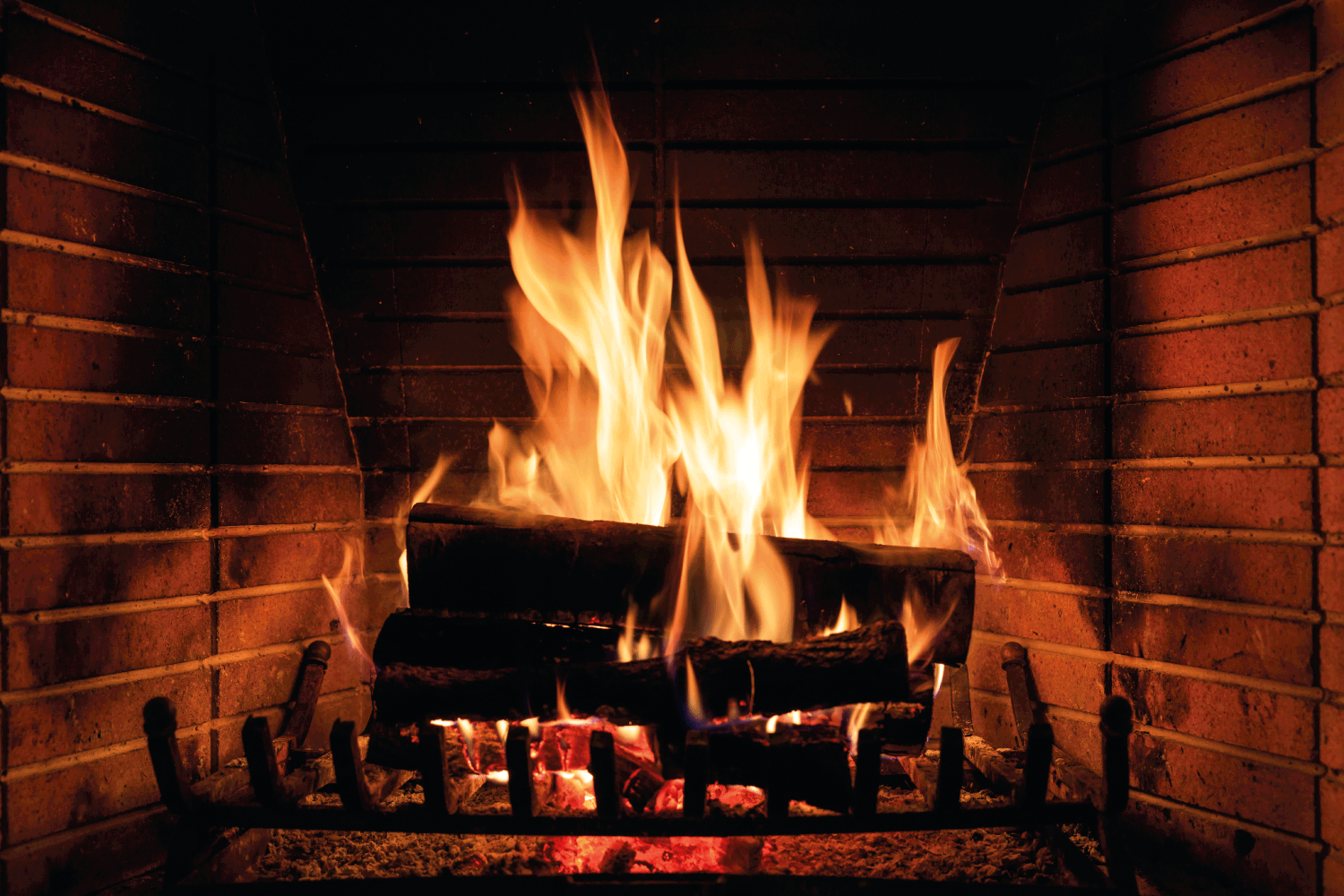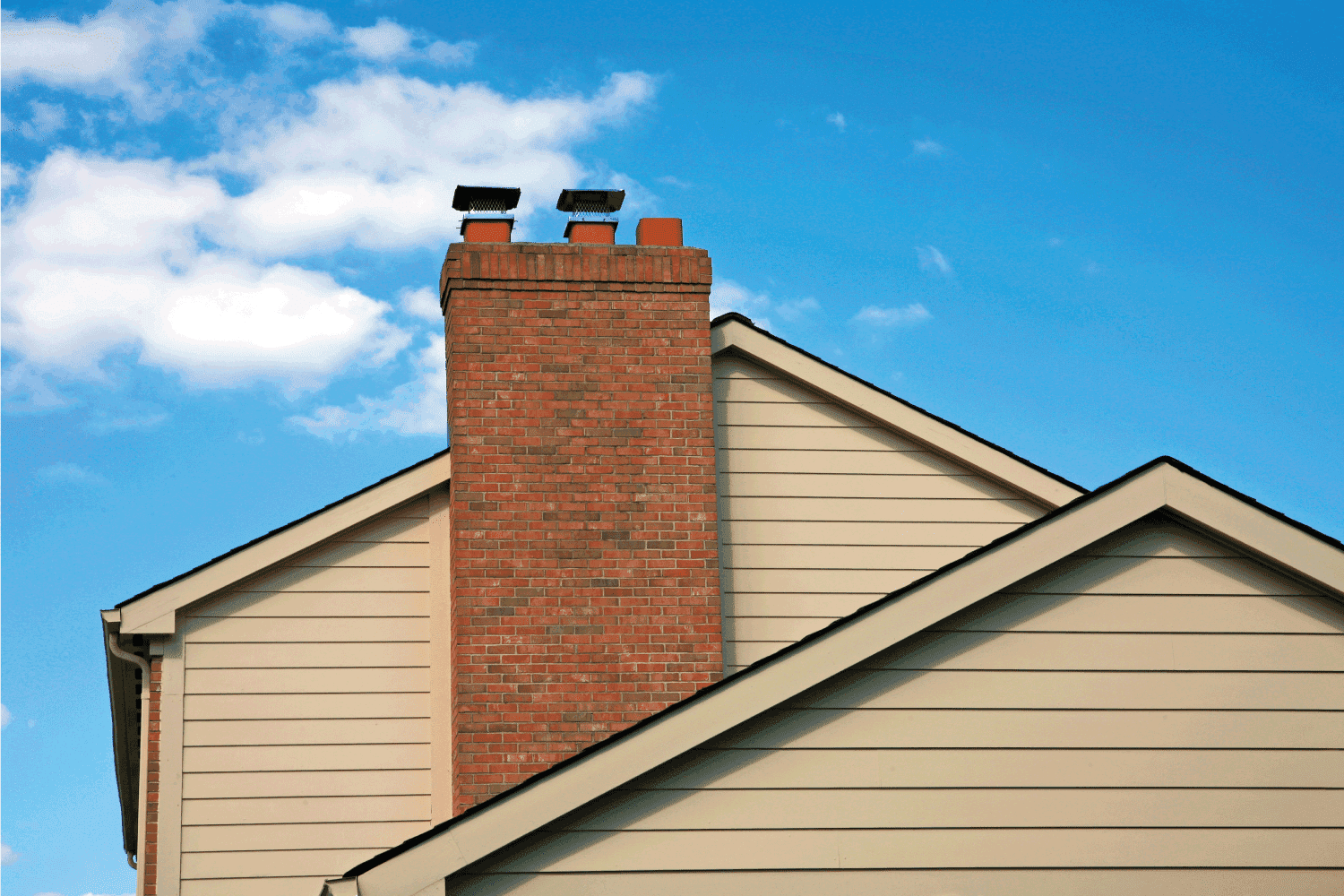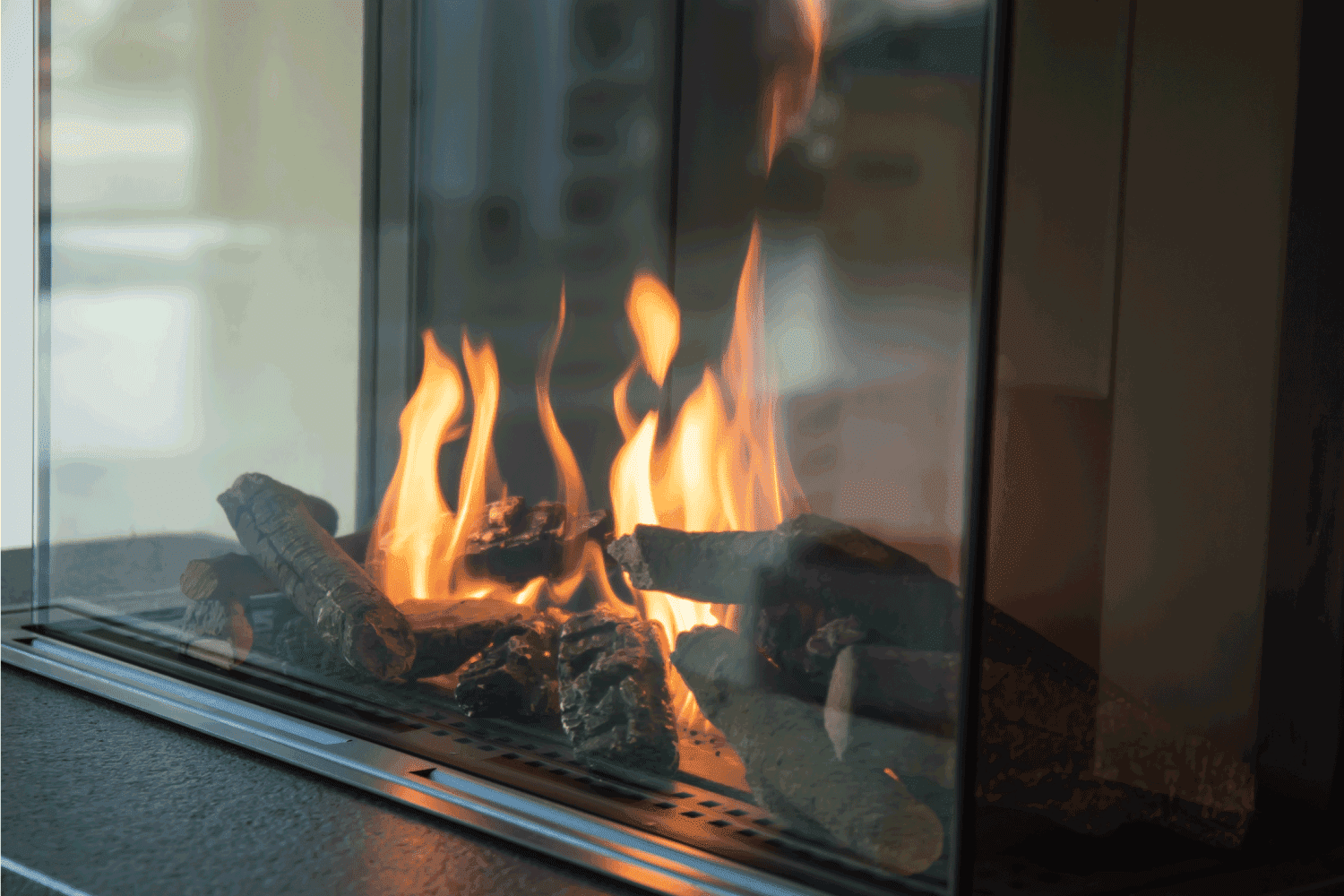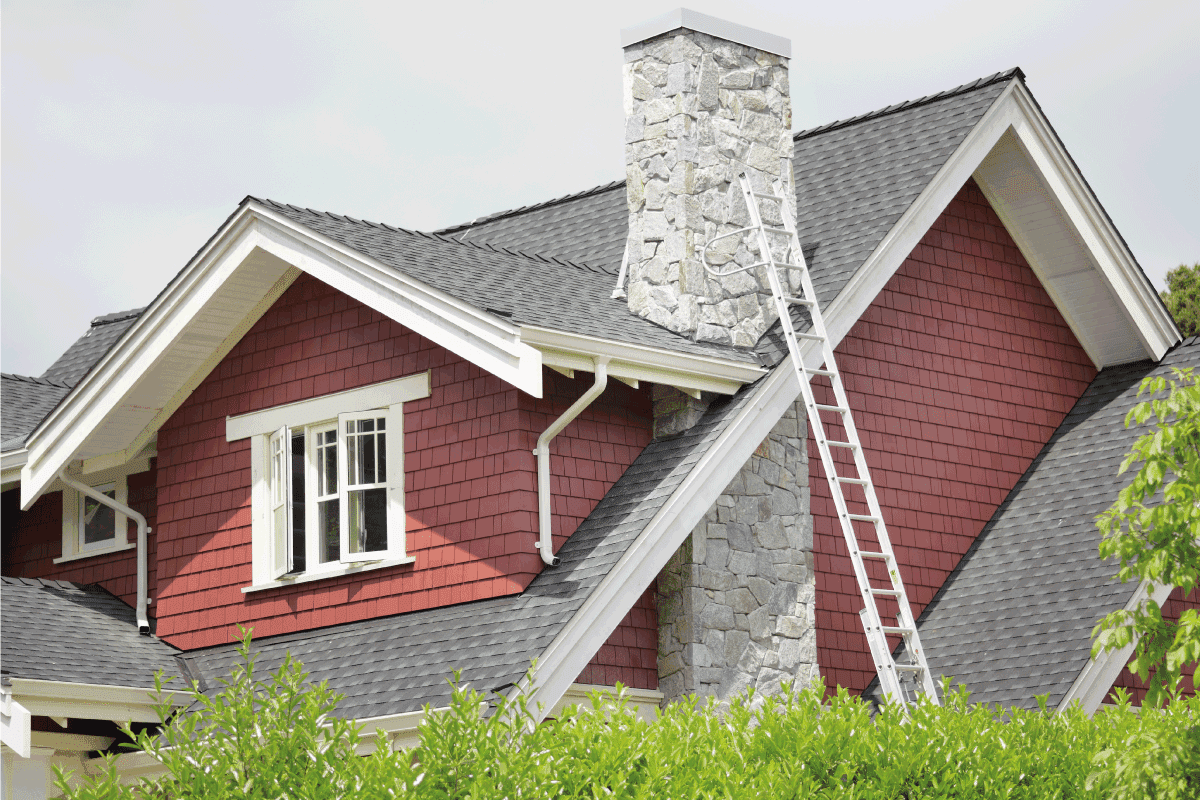Knowing when to use your home's heating systems can be tricky at times. Do you want to use your fireplace in the rain or when it's windy out but don't know whether it's safe? Well, we've done plenty of research and have the answers waiting for you. Let's get into it.
You can certainly use a fireplace if it's raining outside, especially if you have a chimney cap installed. Depending on the severity of the wind, we wouldn't recommend starting a fire in conditions above 40 MPH, as this can trap smoke in your home or even spread live embers.
Again, it's always a good idea to check the weather before turning on your fireplace.
As we begin, we will cover all things fireplaces and discuss when and how you should use one. Whether you haven't tried starting a fire in inclement weather or need a safer way to do this, we're here to offer some help. With that said, let's dive right into this topic!

What Happens When It Rains And You Have A Fireplace?
Depending on what a fireplace is made of, rain can cause quite a bit of damage. Most times, you'll want to have a chimney cap installed with your fireplace to prevent water from leaking into your home, which should only cost around $100.
Considering that rain tends to fall at an angle, this won't usually mean your chimney/fireplace will get to the point of flooding, but again, it's better to be safe than sorry.

Is It Normal For A Fireplace To Leak When It Rains?
If you don't have protection installed, expect some leaking when it rains. Especially if it rains more than usual or the weather calls for a major storm, this can wreak havoc on your chimney, fireplace, and home.
That said, light showers shouldn't cause leaking in your chimney or fireplace, so if you notice water damage, you might want to have someone look at your structure.
Homesaver Black Chimney Cap
This chimney cap is a galvanized mesh material, measures 13 x 13 inches, and comes with a lifetime warranty.
Follow this link to see it on Amazon.
How Do You Waterproof A Chimney?
Although you can do this a few different ways, we recommend using a waterproofing sealer on the inside of your chimney, paired with a chimney cap. You can also try a waterproofing spray, which you should apply evenly throughout the entire interior of your chimney.
Regardless, you should protect chimney masonry from exposure to water because it can develop cracks, gaps, voids, and even missing mortar, so doing this is essential. Again, waterproofing doesn't take much time or money to accomplish and can save you the hassle of having to repair your chimney down the road.
ChimneySaver Water Repellent With Stain Blocker
This chimney sealer has a water-based formula, is 100% vapor permeable, reduces water penetration by 99.9%, and comes in a one-gallon container.
Check out this sealer on Amazon here.
How Much Does It Cost To Waterproof A Chimney?
Typically, you can expect to spend anywhere between $20 and $60 for sealant if you want to do it yourself, or at least $200 to have a professional come waterproof your chimney. In general, this process won't be costly and works more as a preventative measure, so it shouldn't break the bank.
Of course, your total price tag will depend on how big your chimney is and whether there is a lot of clean-up to do beforehand, so everyone will be different.

How Long Does Chimney Waterproofing Last?
For the most part, your chimney's waterproofing should last about 20 years. That said, windy and saltier climates can eat away at the waterproofing layer on your structure, so this might cut off a few years for some homeowners.
That said, this should mostly apply to those living close to the beach or in desert regions, so expect more frequent waterproofing if you fall into those environmental categories.
Can You Permanently Waterproof A Chimney?
Unless you completely seal off your chimney, it's not possible to permanently waterproof it. Considering that sealer will only last about 15-20 years on average, expecting a product to last forever isn't realistic.
Again, some products might promise to last for decades, but even the strongest sealants/sprays will eventually start to wear down and become less effective.
Is It Safe To Use A Fireplace If It's Windy Out?
As long as the wind speed is under 40 MPH, it should be safe to use your fireplace. Like we covered earlier, starting a fire in high winds can cause smoke to become trapped inside your chimney and even spread live embers throughout your home.
Wind patterns can also create pressure zones around your fireplace, which can weaken its foundation over time, so if you hear the wind howling, try to hold off on starting a fire.
Will Wind Cause A Chimney Downdraft?
Yes, if it's windy enough outside, this can cause a downdraft through your chimney. Typically, this won't cause any damage to an inactive fireplace, but if yours is on and a downdraft forms, you could be dealing with live embers and ash blowing out of your chimney.
It's also possible to have embers, ash, and gases blow into your home while a fireplace is on if your chimney has structural damage or a blockage, so try to keep an eye out for anything unusual, regardless of wind speed.

Does Wind Affect Gas Fireplaces?
The wind can make it harder for those with a gas fireplace to get a fire going. Usually, this won't start to become a problem until the wind outside reaches 35-40 MPH, but that's not to say light wind won't affect your gas fireplace.
You can also tell if it's too windy out for a fire if you have a tough time keeping a flame inside of your fireplace, so that's an excellent way to test it without having to go outdoors.
How Do I Stop Wind From Blowing Down My Chimney?
Although it is normal to have some wind come down your chimney, keeping the noise levels and chances of downdraft low is possible. A few ways to do this include:
- Installing a chimney balloon.
- Use a chimney Flueblocker while your fireplace is inactive.
- Installing a chimney cowl/cap into your chimney.
On top of blocking wind, these methods will also help prevent water from leaking into/down your chimney, so they can help in various ways.
Chimney Balloon® Inflatable Wind Blocker
This chimney balloon stops wind and debris from coming into your chimney, promises an easy installation, claims to reduce your heating bill, and comes in different sizes.
View this chimney balloon on Amazon.
Flueblocker Rectangle Chimney Draft Stopper Plug
This draft-stopping chimney Flueblocker is 100% sheep's wool, blocked wind, debris, and odors, and measures 13 x 35 inches.
Follow this link to see it on Amazon.
Why Does My Fireplace Smoke When It's Windy?
If you notice your fireplace start to smoke when it's windy, this means you probably shouldn't be using it. Like we said, high winds can push air down your chimney, causing anything inside your fireplace to become airborne.
Even with a cap installed on the top of your chimney, extreme winds can make their way down into your fireplace, causing smoke to fill the room. Again, this shouldn't be something to worry about unless the wind speed calls for 40 MPH or more, but it is possible in lower speed conditions.
Can Wind Put Out A Fire?
Yes, it is certainly possible for the wind to be strong enough to put out a fire. Although this would need to be pretty extreme to affect your fireplace, high winds can take the heat from your fire's flame, causing it to go out.
That said, wind mixed with a fireplace can also cause an even bigger, harder to control fire, which you want to avoid.

To Wrap It All Up
Whether you're new to using a fireplace or want to try it during inclement weather, it's always good to know when you can and can't start a fire. From what we found, you can use a fireplace in the rain, as well as wind, as long as it isn't extreme.
Specifically, you want to make sure to waterproof your chimney before using a fireplace, with either a chimney cap or waterproofing sealant. When it comes to wind, we don't recommend using your fireplace if it's over 40 MPH, as this can blow smoke, live embers, and gas into your home.
Regardless, remember to try using a preventive chimney product before it rains or becomes super windy, and don't be afraid to start a fire if the weather allows for it.
Made it to the end? Check out these helpful related posts down below!
How Often Should You Add Wood To A Fire In Fireplace?




